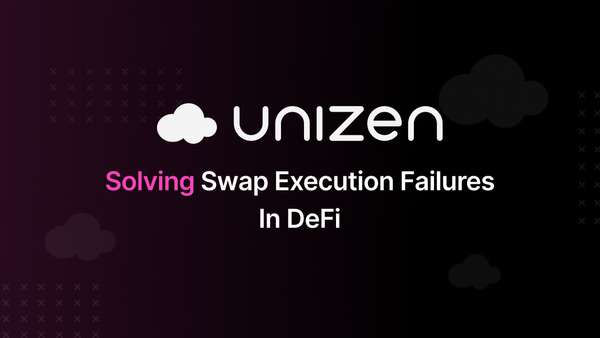What is CEX in Cryptocurrency, and How Does it Work?
Discover what is CEX in cryptocurrency, how it works, and how it differs from a decentralized exchange (DEX) in the crypto market.

Trading cryptocurrencies is a big part of the global financial system since it gives investors a way to trade digital crypto assets immediately and at any time. Some platforms facilitate the trading of these digital assets or currencies. The platforms are referred to as cryptocurrency exchanges. All exchanges are different, and the type of exchange used will determine the result, security, charges, and how one operates well in the crypto market.
This article gives a detailed explanation of what is CEX in cryptocurrency and how it works. Let’s also discuss decentralized exchanges, known as DEXs, how it is different from CEXs, and their advantages & disadvantages.
What is a Centralized Exchange (CEX)?
A Centralized Exchange (CEX) is a cryptocurrency exchange where users can trade, buy, and sell cryptocurrencies using a centralized entity. It uses an intermediary that monitors and facilitates crypto asset trading between users. It trades digital assets while providing liquidity, security, and a centralized trading process. CEXs operate exactly like traditional stock exchanges, where traders finance their accounts and trade money easily. Most people use centralized exchanges because the interface is user-friendly and it has advanced trading software.
CEXs also often act as crypto on-ramps and off-ramps, as many allow users to fund their accounts with fiat currency or liquidate their crypto assets back to fiat. Some of the popular centralized exchanges include Binance, Coinbase, and Kraken. Other big centralized crypto exchanges are Bybit, OKX, Bitstamp, Huobi, and KuCoin, which depend on different trading volumes or requirements and even locations.
How Does Centralized Exchange Work?
Centralized exchanges use a strict format to allow for straightforward and efficient trading. Its operation relies on:
- Order Book: An order book system of a CEX is where buy and sell orders are booked and matched instantly. The order book consists of bid and ask orders, where assets are sold and purchased by traders. They indicate how much they want to sell or purchase the assets. The trade is executed automatically if the seller's ask matches the buyer's bid. The platform facilitates high-speed trading, liquidity optimization, and price discovery.
- Custody over Users' Assets: CEXs require users to transfer their assets or funds to exchange-controlled wallets. This means the exchange acts as a custodian, keeping users' funds in hot and cold wallets. Users then trade against each other in the exchange's internal ledger, and trades are not recorded on the blockchain immediately; only deposits and withdrawals interact with blockchain networks.
- KYC Compliance and Regulatory Requirements: Another feature of CEXs is that they come under financial regulations, i.e., Know Your Customer (KYC). The inference is that users are required to verify themselves by submitting government-approved IDs, addresses, etc. before they are granted full trading facilities. At the same time, while KYC assists security and trust, it also removes user privacy, which is one of the reasons why crypto traders don't like decentralized exchanges.

Advantages of Centralized Exchanges (CEXs)
Centralized exchanges (CEXs) are the most common cryptocurrency trading platforms because they provide a highly organized platform and simple-to-use interfaces:
High Liquidity
Liquidity refers to the ease of buying or selling an asset without any influence on its price. CEXs are very liquid and ideal for traders who need faster trade execution, less volatile prices, and more trading pairs. Such liquidity is ideal for traders, investors, and any user who wants to experience smooth trading.
User-Friendly Interface
CEXs prioritize usability. Their interfaces are designed to serve both novice and experienced traders with easy navigation to make depositing funds, trading, and tracking performance very simple. It also provides one-click trading where market, limit, and stop-loss orders are simple to execute.
Customer Support & Account Recovery
A big concern that could occur in crypto trading is when funds get lost. This can happen if you forget your password, your account gets hacked, or there are probably even technical issues. CEXs has dedicated customer support and account recovery mechanisms to address these issues. For example, an account recovery where users can reset passwords or recover their accounts through identification checks if they are locked out. It also prevents fraud by facilitating clients' ability to activate security measures like two-factor authentication (2FA).
Disadvantages of Centralized Exchanges (CEXs)
As centralized cryptocurrency exchanges have their advantages, they also have some disadvantages that traders and investors should consider:
Security Risks
The biggest risk of CEXs is that they can probably be hacked. Since the exchanges store users' funds, they are prime targets for hackers. Customers' funds can be lost if their exchange gets hacked. For example, KuCoin was targeted when hackers stole the keys of many wallets on the platform in 2020, and millions of crypto funds were lost. Again, in 2021, BitMart, a CEX platform, was hacked, losing nearly $200 million in multiple cryptocurrencies. There can be times when transactions can just shut down without warning, and you simply cannot withdraw your money. The way to reduce these risks is to choose exchanges with sound security procedures like two-factor authentication (2FA)and cold storage of coins.
Regulatory Compliance
CEXs are under strict regulatory obligations from governments worldwide. Exchanges limit users from certain nations due to regulatory concerns. These regulations were made to protect investors, but they also limit freedom, which makes CEXs less appealing to users who want unlimited access to financial services.
Privacy Concerns
Financial privacy is very important in cryptocurrency. Centralized exchanges violate this by collecting and storing user data. If you’re using CEXs, you’ll need to give a full identity disclosure. This could lead to user identity tracking and data breaches.
Centralized Exchange vs Decentralized Exchange
For a better understanding of what is CEX in cryptocurrency market, let’s look at what DEX is and how they differ from each other.
What is a Decentralized Exchange (DEX)?
A Decentralized Exchange (DEX) is a type of cryptocurrency exchange that allows customers to trade cryptocurrencies directly by leveraging blockchain smart contracts. This is done without intermediaries or any third party.
How Do DEXs Work?
Decentralized exchanges make use of smart contracts to match buyers and sellers. Most modern DEXs use Automated Market Makers (AMMs), a model that pools liquidity from users instead of traditional buyers and sellers in a financial market. Smart contracts are programs deployed on a blockchain that automatically execute trades.
DEXs also supports peer-to-peer trading, where customers can connect their wallets to trade directly on the exchange. This is done without ever holding user funds in the exchange wallet. Popular examples of decentralized exchanges include Uniswap, which is one of the largest and most widely known DEXs, PancakeSwap, and SushiSwap, a multi-chain DEX. DEXs are usually non-custodial as users can maintain complete control of their funds; they are open, and you do not need any permission to operate them.
Advantages of Decentralized Exchanges (DEXs)
Decentralized exchanges give users a transparent and secure way to trade cryptocurrencies. Some of the advantages of DEXs include:
Privacy & Anonymity
Most DEXs do not use identity verification. With this, users can create an account and trade tokens anonymously without revealing their names, IDs, or banking info. People in countries with tight financial control can still trade cryptocurrency without censorship.
User Control
Using a decentralized exchange platform allows customers to trade money directly from their own wallets. Customers always have full control of their crypto, and since DEXs never have customer funds, hackers cannot attack a centralized wallet to steal assets. DEXs eliminate your withdrawals from getting frozen or limited, as no money ever leaves your personal wallet.
Low Platform Fees
DEXs remove middlemen and reduce trading costs. Centralized exchanges, however, charge trading fees, withdrawal fees, and even deposit fees. DEXs only charge network transaction fees (gas fees) to execute trades and don't often charge extra commissions beyond normal blockchain transaction fees. DEXs also allow for the free transfer of assets.
Disadvantages of Decentralized Exchanges (DEXs)
Decentralized exchanges (DEXs) also have certain disadvantages:
Low Liquidity
DEXs have reduced liquidity compared to centralized exchanges. Liquidity refers to how quickly assets can be bought and sold without affecting the price significantly. Since DEXs rely on single traders and liquidity pools rather than institutional market makers with deep funds, they suffer from price slippage, which causes price movements that are big enough to create less optimal trade execution. DEXs are based on blockchain confirmations, which can slow up trades, especially when the network is full.
Not User-Friendly
DEXs require users to handle their own wallets and understand blockchain mechanics. This means that you must have a certain knowledge of how blockchain and wallet management works. Traders are expected to establish and secure their own wallets before trading, and it can be difficult for new traders to estimate costs and optimal times for transactions. DEXs also use manual trade execution, unlike CEXs, which have features like stop-loss orders and margin trading. This manual trade execution is not very convenient.
No Customer Support
There is a complete lack of customer support using decentralized exchanges. Since they operate without a central body, no one can be contacted in the event of stolen or lost funds, and there would be no way to recover the assets. It could lead to failed transactions, especially with users who don't really know what to do.

Key Differences Between CEX and DEX
When it comes to cryptocurrency exchange platforms, you can either choose centralized exchanges or decentralized exchanges. While they both serve the same purpose, they can also be very different. They are different in the aspects of:
Asset Custody
CEX: The money remains on the exchange server, so users' assets are under the platform's control. It is easy but risky as the users are asked to put their trust in the exchange to safeguard their money.
DEX: Complete control over funds is given to users through self-custody. Money remains in personal wallets, reducing exchange hack risk but increasing personal accountability for security.
Liquidity
CEX: You can sell and buy large amounts of crypto without affecting the prices. This makes liquidity typically high. Traders and market makers ensure order execution is extremely stress-free.
DEX: Liquidity could be thinner, leading to price slippage, especially for large trades. DEXs mainly depend on users' liquidity pools, which will not always be deep enough to execute trades quickly.
CEXs provide higher liquidity and faster execution of trades, so they are a more suitable option for frequent traders.
Ease of Use
CEX: CEXs are built for regular users and thus have easy interfaces, customer care, and support features such as limit orders, stop-losses, and fiat currencies on-ramps (credit card purchases of cryptocurrency).
DEX: More tech-savvy. Users need to control private wallets, know blockchain transactions, and manually set parameters such as slippage tolerance.
Privacy & Security
CEX: Most CEXs require KYC verification, so the user has to enter personal information. This takes away from anonymity but provides regulatory compliance.
DEX: Users can trade anonymously without having to input personal details.
Transactions are still recorded on the blockchain, so they're publicly traceable.
While DEXs are more private, CEXs are regulated security.
Fees & Costs
CEX: Charges platform fees on trades (which is usually 0.1% – 0.5%) and withdrawal fees when you withdraw funds from the exchange. Some CEXs also charge deposit fees for fiat deposits.
DEX: No platform fee, but they require network gas fees to use the blockchain for the transaction. Those fees are based on how congested the network is; for example, ethereum gas fees are high during peak hours.
Therefore, CEX fees are definite but include platform fees, while DEX fees are based on blockchain traffic.
Use Cases of CEXs and DEXs
Centralized and Decentralized Exchanges work in different areas, so which one to use will depend on your trading goals, risk tolerance, and experience level. Here's how to choose:
When to Use a Centralized Exchange (CEX)
CEXs are best suited for crypto users who prefer ease of use, security, and liquidity. They're perfect if you:
- You're a Crypto Beginner: New traders find CEXs easier to use. These exchanges offer easy account setup, a user-friendly trading experience, and assistance via customer support to help you on your crypto journey.
- Want High Liquidity and Fast Transactions: CEXs possess order books and deep liquidity, so they provide fast trade execution with little slippage. This makes them perfect for day traders and crypto investors who require fast and efficient trades, especially for big orders.
- Require Customer Support and Account Recovery: With a CEX, you can contact customer support for assistance if you lose access to your account or have transaction issues. Since CEXs centrally hold funds and accounts, it is possible to recover passwords when you forget and also retrieve funds.
- Want to Buy Crypto Using Fiat Money: With centralized exchanges, users can buy crypto with credit/debit cards, make bank transfers, and apply other fiat payment options, which definitely makes entry into crypto easier.
Centralized exchanges are generally best for new & active traders and individuals who want secure transactions, user experience, and customer support.
When to Use a Decentralized Exchange (DEX)
A DEX is probably your best bet if you:
- Value Privacy and Anonymity: Since DEXs don't have KYC verification, you can trade without revealing personal info. This is a big advantage for those users who value privacy and want to stay under the radar of centralized records.
- Want Complete Control Over Your Assets: DEXs lack third-party custody, meaning you always have access to your funds.
- Trade Rare or Niche Tokens: DEXs give you access to new, experimental, and niche tokens you won't find on larger CEXs. If you’re a DeFi enthusiast or maybe you’re one of the early adopters of new projects, you should choose a decentralized exchange platform.
Decentralized exchanges are preferable for people who want to operate more private transactions, also decentralized finance traders, and those who prefer complete financial autonomy.
Conclusion
Trading in the crypto ecosystem is evolving, and since there is an increasing demand for decentralization and security, hybrid models with the best elements of CEXs and DEXs are becoming popular. However, there is no one-size-fits-all solution to crypto exchanges. Using a CEX or a Decentralized Exchange (DEX) depends on how well you understand what is CEX in cryptocurrency, how DEX works, your trading goals, risk tolerance, and of course, personal convenience. It's simple: when you consider the security, control, liquidity, and usability of these platforms, you can make a choice that fits what you're looking for.



